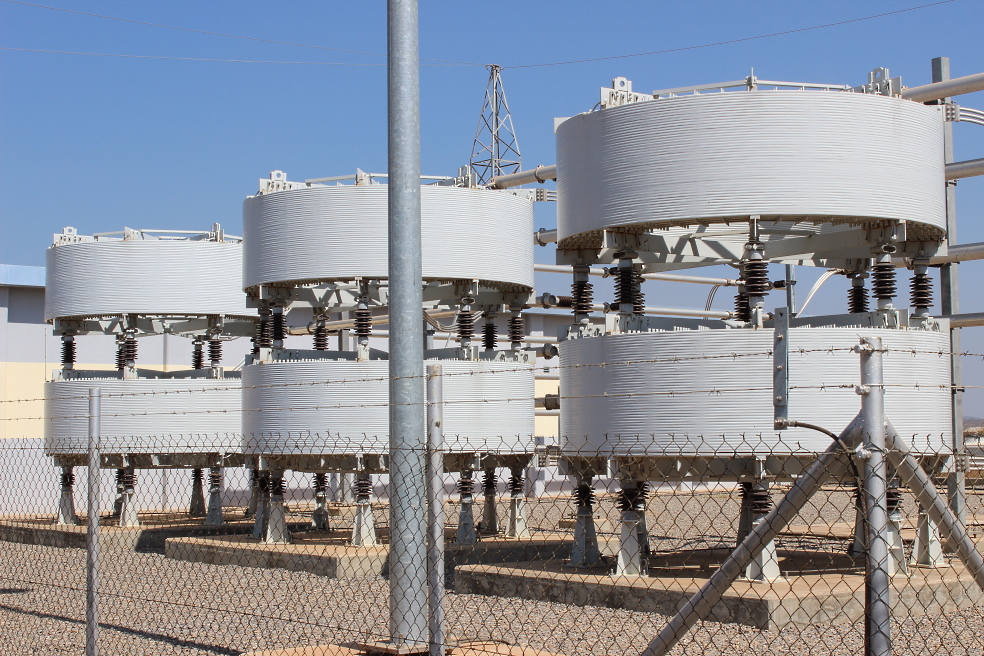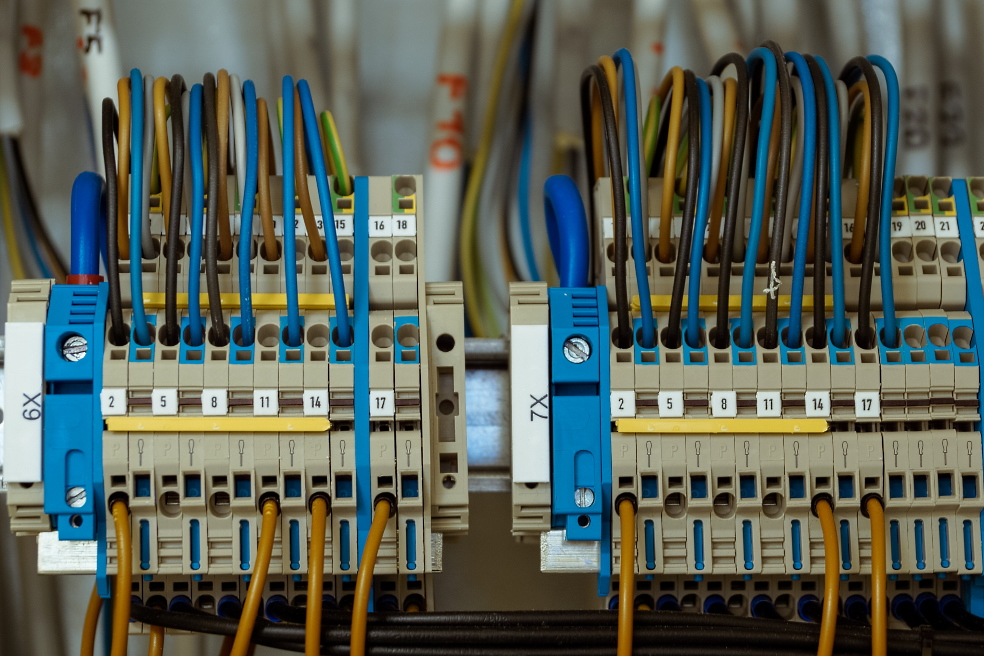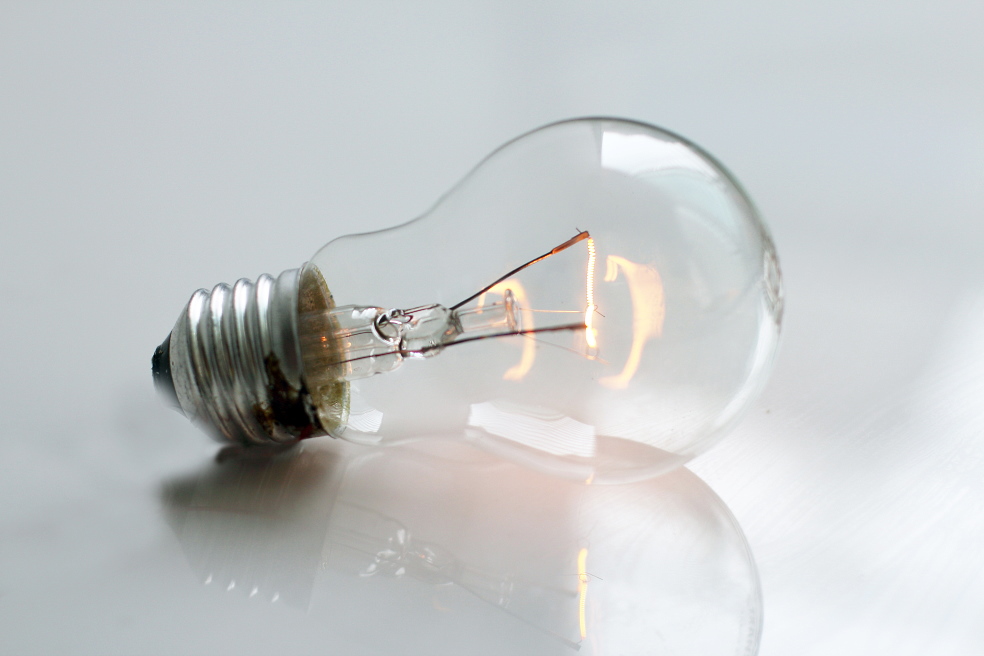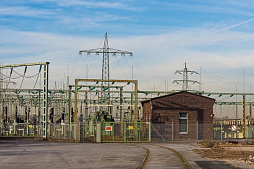To consider an application for financing, fill out the form and send it to us by e-mail along with the project brief, or contact our experts
They make electricity storeable and portable, eliminating the need for simultaneous production and consumption.
These technologies provide uninterrupted energy supply in the event of a critical drop, decrease or absence of voltage in the power grid.
Highview Power design and implement cryogenic energy storage systems that are ideal for renewable energy sources.
In this article, we will talk about physical, electrochemical and electrical energy storage systems, as well as their application in renewable energy.
The global electricity industry strives to balance the levels of production and consumption of electrical energy.
An innovative technology that separates production from consumption is an electrical energy storage system.
This technology completely changes the entire dispatching system and the ratio of traditional and alternative power generation. The increase in the amount of electricity generated from renewable energy sources (RES) has posed new challenges for the power grids, which are already operating under increased load conditions.
Modern power systems balance supply and demand, demonstrating flexible control and optimal energy efficiency.
The growing use of renewable energy sources creates a new source of instability.
The deployment of solar and wind power plants around the world is accompanied by significant peaks and troughs in electricity production.
Storage systems smooth out power fluctuations in solar and wind power plants. These systems provide a stable level of power output and make renewable energy a more predictable component of an integrated energy system.
The use of a particular energy storage system (ESS) depends on several technical and economic factors.
From a technical point of view, any ESS is a complex multi-component system with several potential energy conversion methods. Each step of this process is carried out using well-standardized components such as transformers, energy conversion systems and batteries.
Currently, there are several types of electricity storage technologies.
Examples of these systems include pumped storage power plants, chemical power sources, as well as energy storage systems based on flywheels, hydrogen, and synthetic natural gas.
Benefits of electrical energy storage systems
Worldwide, the number of wind and solar power plants is growing, and the relative share of renewable energy sources in the energy mix is also increasing.Fluctuations in power generation can lead to grid overload and frequency instability. The integration of energy storage with renewable energy sources aims to mitigate the impact of uneven generation on the grid.
Grid balancing has traditionally been achieved by increasing generation to meet changing energy needs. But this approach negatively affects both efficiency and equipment life.
This measure is not always sufficient, especially as the production of renewable energy rises. Grid-connected ESS overcome these limitations by providing an important buffer that links consumption and generation. The use of such systems increases the efficiency of the grid and helps to reduce CO2 emissions.
Components of the electrical energy storage system
Modern energy storage solutions include several key components.The system is based on a device in which the physical process of energy storage takes place. In most cases, this process is based on electrical (capacitors), electrochemical (batteries), or mechanical (flywheels) operating principles.
Typically a grid-connected ESS requires a power converter, which can be a single or distributed converter system. In other cases, the generator is connected to the grid through a frequency regulator or directly.
For direct connection, a power converter is not required or is only used to generate the excitation voltage. In most cases, a transformer is installed between the grid and the energy storage system.
The physical energy storage status is monitored by a Battery Management System (BMS) or a Capacitor Management System (CMS). The electronics reads all the necessary data such as voltage, amperage and temperature for batteries and lithium-ion capacitors, flywheel speed and temperature, and other parameters.
The electronic equipment determines the charging and discharging parameters of the ESS.
Depending on the functionality, this can be done locally with minimal response times (milliseconds) based on locally measured data (e.g. amperage, voltage, power, frequency) or within an external energy management system connected to a digital protocol.
These systems require peripheral components to function properly. Depending on the physical principle of the energy storage system, they may include special cooling systems and pumps.
Time shifting energy demand
Electricity storage systems used for this task are charged at low electricity prices and discharged when electricity prices are high. In a shorter period of time, they can perform a similar task, storing energy generated from renewable sources and characterized by unstable performance.If the difference in electricity prices is the main factor, the use of such systems looks attractive.
The accumulation of energy during the period of peak generation to prevent overloading is called “peak shaving”. This approach can be applied at both peak generation and peak demand. Electric energy storage systems used in this way can be located at power plants, next to it or in other parts of the power grid, including near energy consumers.
Another way to use this technology is to store energy to reduce the need for new generating facilities.
Energy storage systems maintain peak power while demand is high, slowing equipment wear.
The system then recharges during a period of low consumption.
Load control and regulation
Load control is one of the important tasks to ensure the stability of the power grid.Energy storage systems in this case are used to supply (discharge) or accumulate (charge) electrical energy when the load changes.
In this case, the rate of change in the load must be within a certain range. The same applies to fluctuations in electricity production that are inherent in renewable sources. The advantages of using ESS for load control are that they react quickly to load changes.
These technologies are used to eliminate instantaneous differences between energy consumption and production in a given area, or to compensate for instantaneous variations between two areas. Traditional power plants are less suitable for this purpose, as rapid changes in energy production lead to equipment wear and tear.
Use of ESS in transmission and distribution of energy
Properly located electrical storage systems within the transmission infrastructure can serve as an energy buffer, preventing overloading and helping businesses delay costly grid modernization.At peak demand, existing transmission lines may not be able to serve all connected consumers. Overloading can increase energy costs. Energy storage systems can compensate for significant overloads.
Installing an ESS can delay the need for modernization of power lines for a certain period, for example, several years.
Such systems provide an alternative to replacing expensive components.
Physical technologies for storing electricity
Today, companies most widely use pumped storage power plants, which are capable of storing huge amounts of energy.Currently, 99% of the world's stored electricity comes from these systems.
Pumped storage power plants
Pumped storage power plants are a set of generators and pumps or reversible hydrogenerators.These are so called gravitational energy storage systems.
During low nighttime hours, the pumps use cheap electricity to pump water into the upper water reservoir.
During periods of maximum electricity consumption in the morning and in the evening, water sinks to the turbine by gravity, and the power plant generates expensive electricity.
Such a maneuverable power source is necessary for operational frequency control in the power grid. The efficiency of these power plants is about 70-85%, and the service life can exceed 35-40 years. They are distinguished by their high installed capacity and inertia.
However, the widespread introduction of pumped storage technologies is hampered by two main problems.
The first is the need to select a natural relief with a large height difference.
The second problem is the need to flood a huge area, which leads to a decrease in efficiency due to water evaporation and turns into a disaster for the local environment.

Compressed air energy storage
The compressed air energy storage unit (CAES) operates with an electric compressor that blows high pressure air into naturally occurring underground cavities or special tanks.Air injection is carried out at night, during the hours with the minimum consumption level. During the hours of maximum power consumption, the accumulated compressed air is used to operate the turbine generator. CAES technologies can be used to store large amounts of electricity, similar to pumped storage power plants. This is achieved by forcing air into natural storage.
For local (industrial) use, air is pumped into artificial tanks of different volumes.
The main obstacles to using CAES technology are finding a suitable geographic location for the storage facility and lower efficiency compared to pumped storage power plants. The latest version of CAES technology is AA-CAES, which includes thermal storage of electricity.
Flywheel energy storage
The storage of electricity in the form of kinetic energy is carried out using a flywheel.A modern flywheel energy storage (FES) design can include flywheel components, bearings, an electric motor / generator, and a vacuum reservoir. The accumulation and release of electricity occurs as a result of the acceleration or deceleration of the flywheel.
The amount of accumulated electricity in a super flywheel depends on the speed of rotation of the latter.
Modern flywheels can withstand over 100 acceleration and deceleration cycles.
During the construction of this equipment, considerable attention is paid to the use of composite materials to increase strength and optimize weight and size characteristics, as well as safety issues.
They are successfully used in emergency power systems of large consumers, including for supplying energy when starting a diesel engine.
The main advantage of FES is instant power up.
All super flywheels can be divided into low speed (up to 6,000 rpm) and high speed (up to 100,000 rpm). Super flywheels have a fairly high efficiency. The latest FES based systems are designed for fast frequency regulation in the national power grid.
Electrochemical technologies for storing electricity
Energy engineering has found other electricity storage solutions that are technically simpler and less powerful than conventional pumped storage power plants.The greatest efforts today are focused on electrochemical technologies that convert electricity into chemical energy of substances.
These technologies are based on the interaction of two electrodes and a special liquid, an electrolyte. Recently, developments not only with liquids, but also with solid electrolyte have become more frequent. Electrochemical cells work according to this principle.
It is one of the most widely used technologies for storing electrical energy both in industry and in everyday life.
The principle of operation of any rechargeable batteries is based on the reversibility of ongoing chemical reactions, so they can be reused.
An interesting solution is flow batteries, which have increased capacity due to the use of two electrolyte containers separated by a membrane. Energy is generated by the interaction of liquid components that can be pumped through the cell.
Lead acid batteries
The most common battery types in the commercial use are lead acid, lithium ion, and nickel cadmium.In lead acid batteries, lead dioxide and lead are used as reagents, while sulfuric acid solution is used as electrolyte.
In the process of charging and discharging of batteries, electrochemical redox reactions occur on the electrodes, and the electrolyte serves as electrochemically active medium for the transfer of ions between them.
The number of ions decreases or new ones appear.
In this process, electricity is stored (charging) or released (discharged).
During the activity of the negative electrode, liquid-phase processes occur, proceeding according to the "dissolution-precipitation" mechanism. The heterogeneous non-electrochemical crystallization and dissolution reactions, together with diffusion, determine the speed of the discharging and charging. They slow down when the ambient temperature drops.
Lead acid batteries are widely used.
Along with their advantages, they have significant disadvantages, including low energy density (10-30 Wh / kg) and the use of toxic lead. They are also characterized by a small number of charge / discharge cycles and a small discharge depth.
According to their purpose, lead-acid storage batteries are divided into several groups.
Among them are starter (internal combustion engines), stationary (backup power source, including RES), traction (electric transport) and portable batteries (power supply of tools and devices).
Lithium ion batteries
Lithium ion batteries contain a carbon material as a negative electrode into which lithium ions are reversibly incorporated.Cobalt oxide, in which lithium ions are also reversibly incorporated, is used as a positive electrode.
The principle of operation of this electrochemical system is based on intercalation, which means the reversible inclusion of molecules or groups between other molecules or groups. Lithium ions are found in different compounds at different electrochemical potentials. The transport of lithium ions between the electrodes is carried out using an organic electrolyte, which includes a mixture of organic solvents and a lithium salt.
The use of organic electrolytes significantly increases the voltage compared to acidic and alkaline systems.
When the battery is being charged, lithium ions are inserted into the anode material.
When discharged, lithium ions are released and transferred to the cathode, and the released electrons generate an electric current in the external circuit.
This type of battery has a high capacity and a deep charging cycle of up to 70-80%. At the same time, the economic feasibility of their use depends on the type of electrochemical systems in the cathode and anode, as well as on the temperature and operating conditions. Disadvantages include high cost, sloping discharge curve and relatively high self-discharge. Due to the high energy density, the production of these systems has increased dramatically in recent years.
Nickel-ion batteries
The latest electricity storage technology and the third generation of nickel-ion batteries is a system that uses lithium ferrophosphate as the cathode material.It is an excellent material that is able to release almost all of the accumulated lithium while remaining stable.
At the same time, the main advantage of lithium-ion batteries remains, that is, the high energy density. Thus, third-generation lithium-ion batteries have become a safe and highly efficient alternative to previous systems.
Nickel-cadmium storage batteries have been known for a long time.
Their principle of operation is based on the formation of cadmium hydroxide at the anode and nickel hydroxide at the cathode. Potassium hydroxide solution is used as an electrolyte, therefore they are also called alkaline batteries. They are capable of operating at low temperatures, and the permissible charging and discharging currents are much higher compared to lead acid batteries.
These advantages make it possible to widely use nickel-cadmium batteries in transport, aviation and stationary systems.
Nickel-cadmium batteries have such a disadvantage as the "memory" effect. Their energy absorption is significantly reduced when discharging or charging is incomplete. For charging, special algorithms are used.
Despite all the disadvantages listed above, nickel-cadmium batteries were considered an alternative to lead-acid batteries in electric vehicles until the introduction of more efficient and less demanding systems. However, they were unable to completely replace lead-acid batteries, mainly due to the high cost, labor-intensive production technology and scarcity of cadmium and nickel.
Electrical technologies for storing electricity
A supercapacitor is an impulse device designed to compensate for fast transients in various electrical circuits.It differs from the above-described types of storage batteries in significantly lower power consumption and increased power density (2-10 kWh / kg).
The process of accumulating energy in supercapacitors is carried out by dividing the charge into two electrodes with a sufficient potential difference. Since chemical transformations of substances do not occur during the operation of the supercapacitor (unless the charge voltage increases), the service life of the system is long and can exceed 100,000 charge / discharge cycles.
In terms of their main parameters, supercapacitors occupy an intermediate position between chemical elements and conventional capacitors.
Given these characteristics of supercapacitors, energy engineering experts recommend using them in hybrid circuits along with batteries. In this case, the supercapacitor reacts to short-term peaks in the generation or consumption of electricity, increases the battery life, and reduces the response time of the entire system to external influences.

Electricity storage technologies for renewable energy sources
The growing use of renewable sources in the energy sector is leading to increased efforts to modernize power grids as well as an increase in the use of batteries.As a result of technological progress in recent years, the installed renewable energy capacity has been growing at a record pace.
This is especially true for wind and solar power plants.
The table below shows the change in power generation of wind and solar power plants in different regions of the world from 2008 to 2018.
| Wind power plants, TWh per year | Solar power plants, TWh per year | |||
|
2008
|
2018
|
2008
|
2018
|
|
| Africa | 1,31 | 14,69 | 0,08 | 9,03 |
| Middle East | 0,21 | 1,06 | 0,01 | 6,12 |
| Central and South America | 1,67 | 65,86 | 0,01 | 12,43 |
| North America | 59,93 | 322,53 | 1,69 | 102,91 |
| Russia and CIS | 0,01 | 0,98 | 0,00 | 0,88 |
| Europe | 121,35 | 404,37 | 7,50 | 139,05 |
| Asian-Pacific region | 36,09 | 460,47 | 3,33 | 314,21 |
| Total | 220,57 | 1269,95 | 12,62 | 584,63 |
Unlike traditional fossil fuel power plants and some forms of renewable electricity generation (biomass, hydropower, and geothermal energy), wind and solar energy can only be supplied if renewable resources are available.
This makes RES less predictable.
Frequent changes in production need to be considered in order to maximize the use of renewable energy sources in the power system and to ensure a constant match between generation and consumption.
Modularity is another characteristic of some renewable energies, especially PV and wind energy. This means that additional power capacity can easily be added and commissioned on site. On-site systems in a home, office building or other commercial or industrial facility range from low power modules to large multi-megawatt power plants.
They are installed on the roof (most often when used for domestic purposes) or in the immediate vicinity of a commercial or industrial site.
This so-called distributed generation replaces the traditional model of connecting large power facilities to the end user over long distances.
The variable, decentralized nature of renewable energy sources makes it difficult to secure a reliable electricity supply. Operators have to monitor the balance between electricity produced and consumed by monitoring the frequency. In Europe, the mains frequency is 50 Hz.
There are many facilities that play an important role in making the energy system flexible, including energy storage.
Their use should be assessed individually for each system, taking into account the requirements of different parts of the world. Rechargeable batteries are a common option but are not suitable for some renewable energy systems.
Rechargeable batteries can regulate frequency fluctuations in the grid and facilitate the use of variable renewable sources by conserving excess energy to supply during peak periods.
There is a wide variety of renewable energy storage technologies.
The oldest and most advanced technology is the so-called pumped storage hydroelectric power plant, which is preferred for longer load fluctuations (over several hours). These systems have long proven their economic and technical advantages around the world.
On the other hand, the battery is a new development in the market. Other emerging technologies include energy storage through adiabatic air compression, hydrogen generators and supercapacitors.
Energy can be stored as heat using boilers, heat pumps, ice, or chilled water. Such technologies can be used for combined heat and power generation to maximize the use of wind energy.
Storing electricity in the form of heat is often a cheaper option than others, although converting heat to electricity is much less efficient.
Therefore, electricity converted to heat can be used for heating, cooling or industrial processes.
Batteries for renewable energy systems
Due to the instability of power generation from wind turbines and solar photovoltaic panels, energy storage technologies have become a key attribute of modern power supply systems.Electricity accumulated during the day is supplied by batteries to the grid at night or during peak hours, when production is insufficient for the needs of consumers.
Rechargeable batteries can be placed in centralized wind and solar PV systems to balance uneven energy production.
They can store surplus renewable energy for later use.
An energy storage system is not just a battery. The world's leading companies view this term differently. They offer the user a more complete solution that includes batteries, electronics and software to monitor and optimize load distribution.
According to the US Energy Storage Monitor, about 94% of batteries used for energy storage in the United States are lithium-ion, another 5% are vanadium redox flow batteries (VRFB) and 0.5% of the market is lead-acid batteries.
Today, the storage of electricity is dominated by lithium-ion batteries installed in solar-powered homes. Thanks to innovative technologies, it is possible to create a large system from which each customer will use electricity according to their needs.
Lazard and Enovation Partners estimate that this will reduce energy storage costs from the current $ 891-985 per MWh to $ 184-338.
Batteries convert electricity to chemical energy for storage and back to electricity when needed. They can perform different functions in different parts of the power system. With solar PV systems and wind turbines, batteries can balance generation and store excess energy for use at higher loads.
Currently, these fluctuations are compensated for by energy from natural gas, nuclear power plants or coal-fired power plants, but this technology usually takes longer to reach maximum power. On the other hand, storage batteries respond fairly quickly to consumer needs. When used instead of fossil fuel power plants, they significantly reduce carbon dioxide emissions.
With low selling prices for electricity, batteries can store energy for a while until prices rise. In the home, batteries can store electricity for use at any time and also provide backup power to homes or businesses in an emergency.
One such battery is aluminum air batteries.
This technology is based on the melting process in the production of aluminum.
The batteries are made from cheap materials and have a higher energy density than lithium-ion cells.
On the other hand, they need to be serviced manually: users have to replace the aluminum plates in order to charge the battery.
Another energy storage technology for renewable energy sources is the so-called flow batteries. Instantaneous batteries are especially suitable for storing energy at the grid level because they are easy to scale.
They provide electricity by pumping electrolyte solution through the cell, so an increase in their capacity is associated with an increase in the size of the electrolyte storage tanks.
Since the active components are separated, flow batteries are safer to use on a large scale than conventional batteries. They also charge quickly and have a long life, but the required materials such as high energy density electrolytes and ion exchange membranes remain expensive.
Several companies are developing ways to increase the energy density of batteries using environmentally friendly materials and at a lower cost. But electricity isn't the only cost-effective form of energy. Researchers are also looking for more efficient ways to store and use heat energy.
For example, a team of scientists from the University of California at Los Angeles (USA) is developing a method for storing heat from solar power plants using "supercritical fluids" or fluids heated to high temperatures and high pressure.
Most SPPs that have energy storage systems use a special molten salt that stores heat and releases it at night to heat the water that drives the turbine.
By using supercritical fluids, SPPs can reduce energy storage costs by up to 40% through a cheaper, simpler and more reliable design. Thus, solar power plants will provide a more reliable power supply, as well as become more competitive compared to nuclear and coal-fired power plants.
Innovative energy storage systems
The battery is only part of a complex system made up of several major components, including the battery itself, control and monitoring systems, and an energy conversion system. Control and monitoring systems guarantee its safety, maximum productivity and operational reliability.
The system prevents overloading of individual cells and controls the charging and discharging of the batteries, which are important for overall efficiency.
This makes the choice of control and monitoring equipment critical when implementing large energy engineering projects.
In the case of lithium-ion batteries, this equipment must monitor the temperature as they tend to overheat. When new devices enter the market, the electricity storage system is also connected to the inverter to provide a complete, fully integrated product.
Decentralized battery solutions
The electrification of islands and isolated rural areas is a challenge and at the same time a unique opportunity for the integration of RES.Some remote areas rely on diesel generators, but this type of power generation is expensive and produces a lot of harmful emissions.
The remoteness and lack of infrastructure mean that the regular supply of diesel fuel is expensive and risky.
At the same time, diesel generators are considered the most affordable and cost effective solution for generating power in remote areas, as they react flexibly to load fluctuations.
However, investors and isolated consumers have an excellent opportunity to try rechargeable batteries. This electricity storage technology can be used to integrate renewable energy sources, reduce reliance on diesel and gas, and in some cases reduce costs.
In some remote areas, “microgrids” have formed with weak network connections and insufficiently flexible energy sources. These facilities will benefit from energy storage enabling more reliable use of local solar and wind farms.
Electricity storage at home
Rechargeable batteries allow more renewable energy to be used for domestic needs.They overcome the constraints of the local power grid as they can more efficiently distribute stored electricity during periods of natural generation decline.
The attractiveness of using batteries in residential buildings depends on matching peak production times and solar energy consumption. In some Gulf countries, for example, engineers have to consider air conditioning during hot periods.
In addition, peak consumption for some households occurs during the daytime. Therefore, the best charging and discharging methods differ depending on the specific power supply system and area, household, and season.
Role of new technologies in energy engineering
Supported initially by government grants and research and demonstration programs, many of the technical problems in electrical energy storage have been gradually resolved.Raising awareness of the latest advances in energy engineering is driving demand for new types of batteries and other technical solutions for renewable energy sources.
The decreasing cost allows rechargeable batteries to become increasingly competitive in the market.
The cost of the above-described electricity storage systems has dropped dramatically in recent years due to increased orders and heightened investor interest around the world.
All of these factors will continue to contribute to the unprecedented use of batteries in power grids.
The company LBFL is ready to provide any professional services related to the financing of renewable energy sources.
Contact us for consultation.
Our services:
• Preparation of a feasibility study for the project.
• Creation and management of SPV.
• Financing projects / investment lending.
• Financial consulting / modeling.
• Credit guarantees.
• Attraction of funding.
• Engineering design.
• Industrial engineering.
• Power engineering.
• Construction and modernization.





















